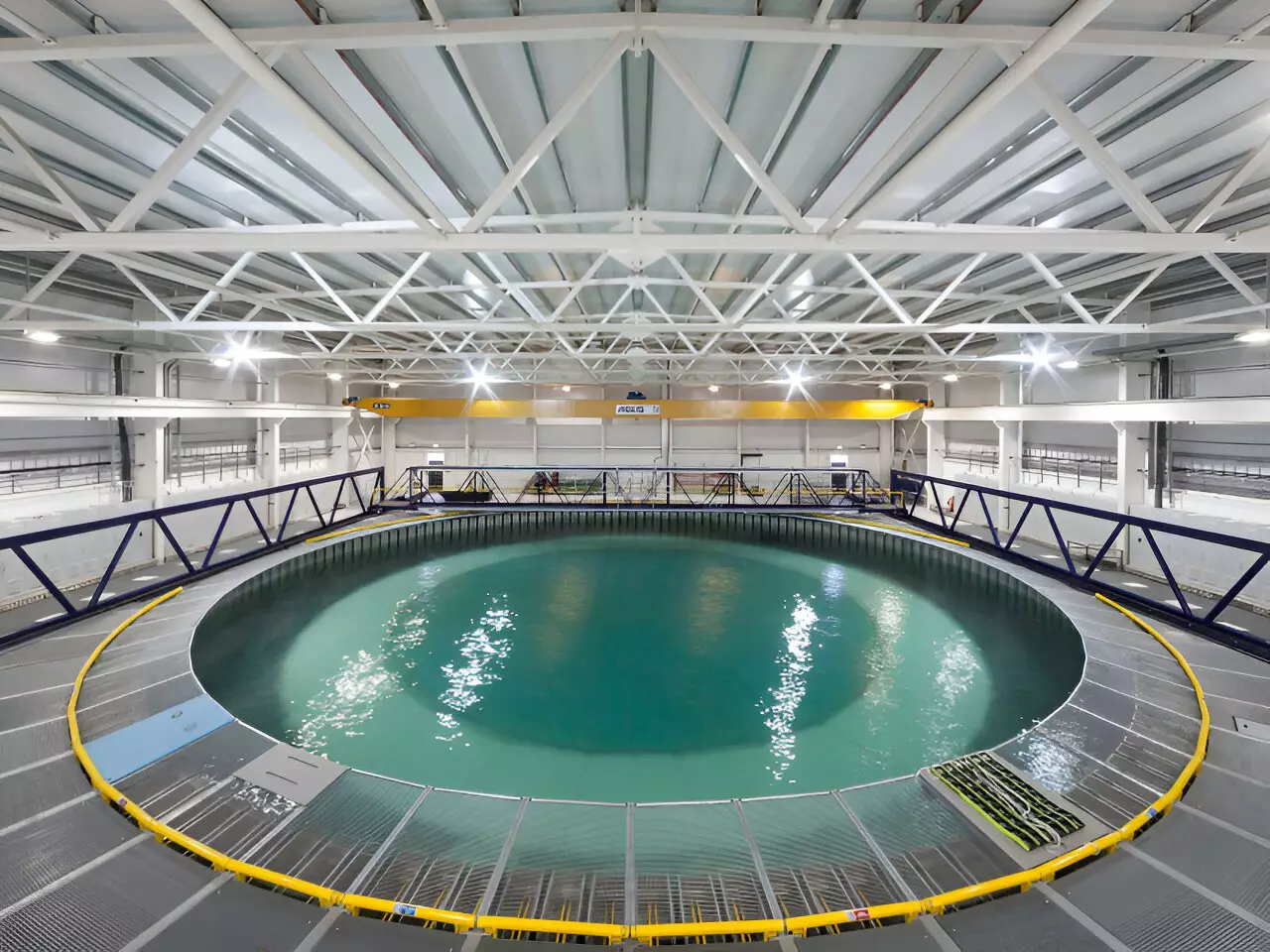Recent research has radically transformed our understanding of ocean wave behavior, suggesting that waves can become remarkably steeper and more complex than previously recognized. Traditionally, scientific studies have treated ocean waves as two-dimensional phenomena, largely simplifying the unpredictable nature of water movement. However, groundbreaking work from a cohort of researchers including Dr. Samuel Draycott from The University of Manchester and Dr. Mark McAllister from the University of Oxford indicates that when waves intersect from different directions, they can achieve heights that are astounding, reaching up to four times steeper than earlier models predicted.
This innovative study, published in the esteemed journal *Nature*, challenges long-standing assumptions about wave dynamics. It reveals that unlike the conventional view where waves are merely projected in one direction, real ocean waves function in a three-dimensional space. This three-dimensionality plays a crucial role in how waves behave before, during, and after breaking, and it dramatically changes the landscape of marine engineering, weather forecasting, and climate modeling.
The Departure from Traditional Models
For many years, the assumption in oceanographic studies has been that waves were primarily two-dimensional, affecting our understanding of wave breaking. However, this fresh perspective posits that waves often propagate in multiple directions, particularly in chaotic ocean environments like those seen during storms or hurricanes. The team’s findings highlight that multidirectional waves can become twice as steep before succumbing to the forces that cause them to break.
Dr. Sam Draycott elucidated that under conditions where waves exhibit extreme directional spreading—such as during severe weather—these multidirectional waves can constantly gain height even post-breakage. This phenomenon informs us that oceanic behaviors are more intricate than originally believed and requires a reevaluation of many past theories surrounding wave mechanics.
The ramifications of this research extend into the engineering and architectural realms, particularly for offshore structures like wind turbines and oil rigs. Current design protocols rely heavily on a two-dimensional model of wave behavior. However, the new insights suggest this could lead to designs that underestimate the potential height and strength of extreme waves, thereby increasing the risks associated with marine engineering projects.
Professor Ton van den Bremer from TU Delft stresses that, upon breaking, conventional waves lose their capacity to grow, forming white caps that mark their termination. In contrast, the newly discovered multidirectional waves, once they reach the breaking point, can continue to rise, showcasing a dangerous unpredictability. This suggests a pressing need to incorporate the complexities of three-dimensional waves into engineering practices to enhance safety and reliability.
Beyond engineering, this newfound knowledge could have significant implications on our understanding of ocean ecology and climate systems. The breaking of waves is pivotal in facilitating air-sea exchanges, involving gas absorption, including carbon dioxide, and the transport of biological matter such as phytoplankton and microplastics. As Dr. Draycott points out, wave dynamics play an essential role in these environmental processes, and therefore, a deeper understanding is critical for ecological monitoring and conservation efforts.
Moreover, as climate change continues to alter weather patterns and sea states, understanding the nuances in wave behavior will be crucial for predicting and mitigating potential damages to coastal and marine ecosystems.
The study is not merely theoretical but is underpinned by advanced empirical techniques. Through innovative wave measurement methods developed at the FloWave Ocean Energy Research Facility in Edinburgh, researchers can simulate and analyze the multifaceted behaviors of waves like never before. This facility boasts a circular tank capable of generating waves from various directions, enabling scientists to replicate real-world sea conditions and investigate wave breaking with unprecedented detail.
Dr. Thomas Davey, a Principal Experimental Officer at FloWave, emphasizes that understanding complex sea states is paramount to advancing marine science. The techniques developed allow for the exploration of wave dynamics that were previously unobservable or poorly understood, hence contributing valuable data to the growing body of oceanographic knowledge.
As scientific exploration into ocean waves progresses, the implications stretch far and wide, urging a reassessment of existing models and practices related to wave behavior. This pivotal research will not only enhance the safety and reliability of marine structures but also deepen our comprehension of oceanic processes that underpin Earth’s climate system.

